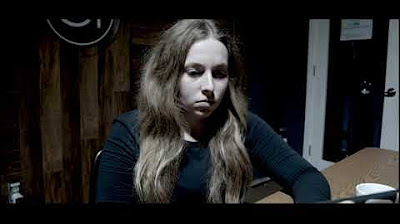Ultimate Guide to Diegetic vs Non-Diegetic Sound — Definitions, Examples, & How to Break the Rules
Summary
TLDRThis video delves into the concepts of diegetic and non-diegetic sound in filmmaking, illustrating their crucial roles in storytelling. Diegetic sound encompasses audio that characters can hear, such as dialogue and environmental effects, while non-diegetic sound includes elements like musical scores and narration that exist outside the film's world. Using film examples, the video highlights how sound design can enhance atmosphere, create suspense, and impact emotional resonance. It also explores trans-diegetic sound, where audio shifts between categories, showcasing how sound can blur the lines between reality and narrative, enriching the viewer's experience.
Takeaways
- 🎬 Diegetic sound refers to everything the characters in a film can hear, while non-diegetic sound includes elements that only the audience perceives.
- 📖 The term 'diegesis' originates from Greek storytelling, emphasizing the importance of the narrative world created by the filmmaker.
- 🔊 Diegetic sound includes atmospheric sounds, dialogue, music within the film, and even certain forms of voiceover that represent a character's thoughts.
- 🦉 Off-screen diegetic sounds can enhance suspense by informing the audience about elements beyond the visual frame.
- 🚫 Non-diegetic sound encompasses music, sound effects, and narration that the characters cannot hear, helping shape the film's emotional tone.
- 🎵 The musical score plays a crucial role in films, impacting emotional responses and overall audience experience.
- 🔄 Trans-diegetic sound involves the shifting of sound from non-diegetic to diegetic, often used creatively to blur the lines between reality and fiction.
- 🧠 Sound can reflect a character's mental state, with specific techniques enhancing storytelling beyond just visuals.
- 📽️ The manipulation of sound, such as unexpected silence or sudden transitions between sound categories, can create powerful cinematic moments.
- ✨ Unique examples of sound design can challenge traditional boundaries, offering fresh and innovative storytelling techniques.
Q & A
What is the main focus of the video?
-The video explores the differences between diegetic and non-diegetic sound in filmmaking, highlighting their roles and significance in storytelling.
What does 'diegetic' sound refer to?
-'Diegetic' sound is any sound that the characters within the film can hear, which is part of the film's world.
How is 'non-diegetic' sound defined?
-'Non-diegetic' sound includes elements that the characters cannot hear, such as musical scores or narration that exists outside the film's world.
Who developed the concept of diegetic and non-diegetic sound?
-The theorist Michel Chion developed a visualization that distinguishes between diegetic and non-diegetic sounds.
What are the three zones of sound according to Michel Chion?
-The three zones are: acousmatic sounds (off-screen sounds that belong to the diegesis), non-diegetic sounds (that characters can't hear), and visualized sounds (where the source is visible on screen).
Can you give an example of internal diegetic sound?
-Internal diegetic sound is represented by a character's thoughts that other characters cannot hear, such as a voiceover reflecting their internal dialogue.
How does diegetic sound contribute to storytelling?
-Diegetic sound helps to establish and enrich the film's world, enhances suspense, and influences the audience's expectations and emotions.
What potential issue can arise from non-diegetic narration?
-Non-diegetic narration can break the illusion of the film, reminding the audience that they are watching a movie rather than immersing in the story.
What is trans-diegetic sound?
-Trans-diegetic sound occurs when sound shifts between diegetic and non-diegetic categories, altering how it is perceived within the story.
How do filmmakers creatively manipulate sound to enhance the narrative?
-Filmmakers can switch sounds between diegetic and non-diegetic to create unexpected effects, deepen emotional impact, or blur the lines between reality and fiction.
Outlines

このセクションは有料ユーザー限定です。 アクセスするには、アップグレードをお願いします。
今すぐアップグレードMindmap

このセクションは有料ユーザー限定です。 アクセスするには、アップグレードをお願いします。
今すぐアップグレードKeywords

このセクションは有料ユーザー限定です。 アクセスするには、アップグレードをお願いします。
今すぐアップグレードHighlights

このセクションは有料ユーザー限定です。 アクセスするには、アップグレードをお願いします。
今すぐアップグレードTranscripts

このセクションは有料ユーザー限定です。 アクセスするには、アップグレードをお願いします。
今すぐアップグレード関連動画をさらに表示

The Elements Of Sound Design

Understanding Movies 101 -- Sound in Movies: Some Basics

Off Screen Space Lesson

The Science of Sound in Film — Film Sound Recording for Beginners

Sound Production: Crash Course Film Production with Lily Gladstone #5

Dissecting The Camera: Crash Course Film Production with Lily Gladstone #4
5.0 / 5 (0 votes)
